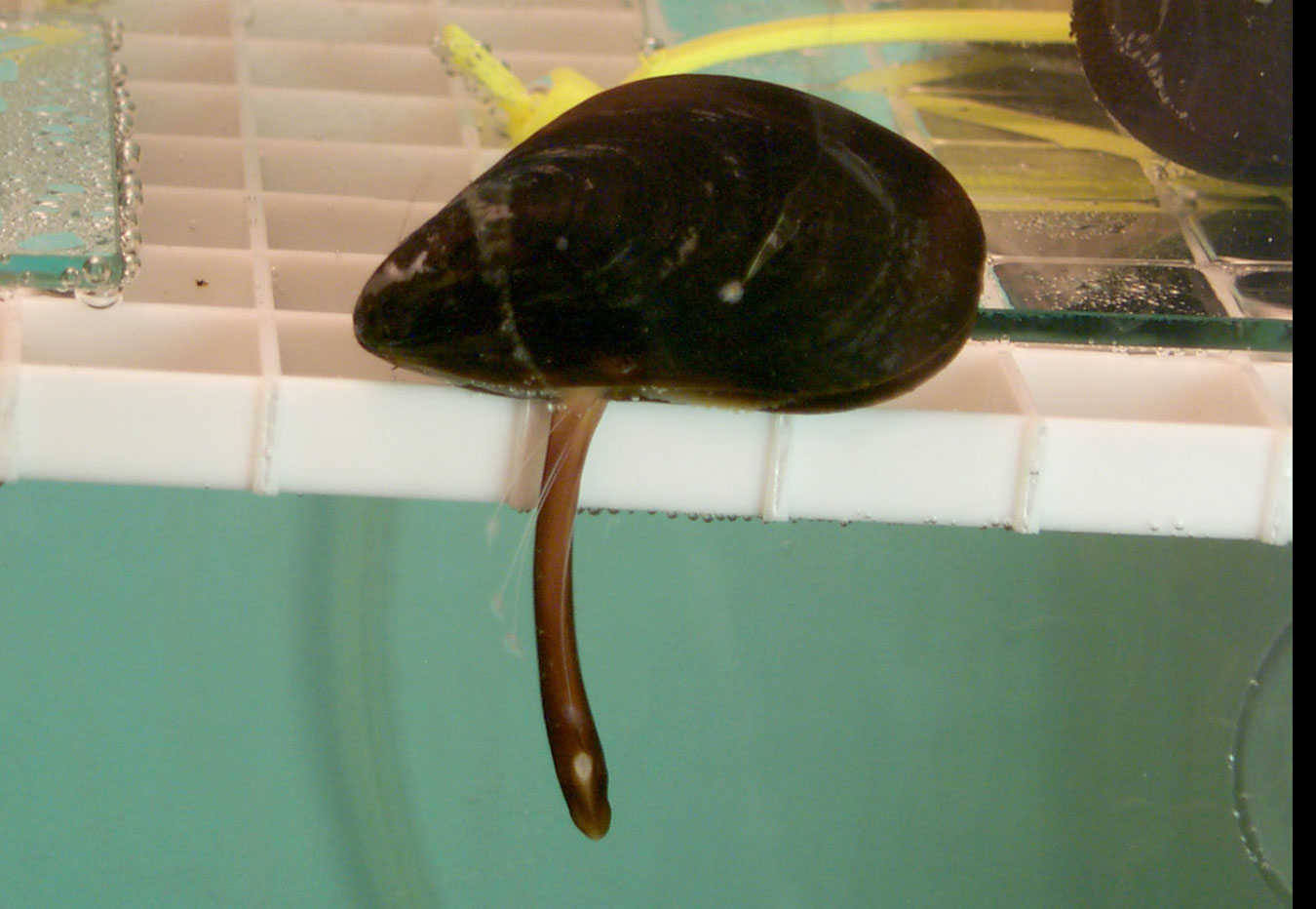NSF PR 04-002 - January 12, 2004 |
| |
 Note About Images Note About Images |
| |
Image 1 |

Common blue mussel (Mytilus edulis) hangs tough after a night adhering to otherwise "non-stick" Teflon®.
Credit: Jonathan Wilker of Purdue University, NSF |
| |
Image 2 |

Common blue mussel (Mytilus edulis) from coastal Maine extends its foot for the camera.
Credit: Jonathan Wilker of Purdue University, NSF |
| |
Image 3 |

The small colony of common blue mussels adhered to this glass plate in the Wilker research laboratory in one evening.
Credit: Jonathan Wilker of Purdue University, NSF |
| |
Image 4 |

A sample of the natural glue extract before it is cured.
Credit: Jonathan Wilker of Purdue University, NSF |
| |
Image 5 |

Wilker and his colleagues use an Instron Materials Testing Apparatus, or "tensile tester," to test the compressional strength of the mussel glues.
Credit: Jonathan Wilker of Purdue University, NSF |
| |
Image 6 |

Wilker and his colleagues use the "tensile tester" and these clamps to test the ability of the glue to hold materials together when being stretched.
Credit: Jonathan Wilker of Purdue University, NSF |
| |
Image 7 |

Jonathan Wilker (center) with his laboratory team: (rear left to right) Mary Sever, Mildred Rodriguez, Jennifer Monahan, Jessi Buetow; (front left to right) Jaime Weisser, Megan Lockard, Trinity Horton, Beth Hamilton.
Credit: Jonathan Wilker of Purdue University, NSF |
| |
Image 8 |

The mussel glue, or plaque, as imaged by a scanning electron microscope at a magnification of 25,000X. The glue layer (top) attaches to a glass slide.
Credit: Debby Sherman and Jonathan Wilker, Purdue University, NSF |
| |
Image 9 |

The hull of this pontoon boat is encrusted with zebra mussels. The bivalves were introduced to the United States in the 1980s, probably as stowaways in the ballast of a ship that traveled from Europe to the Great Lakes. Without natural predators, the mussels spread throughout America's waterways, infesting ships and infrastructure and competing for resources with native species. Wilker and his team are studying the properties of zebra mussel glue to find ways to prevent the animals from hitching rides on vessels.
Credit: Jonathan Wilker of Purdue University, NSF |
| |
Image 10 |

Jonathan Wilker collecting zebra mussels from a freshwater lake in northeast Indiana.
Credit: Jonathan Wilker of Purdue University, NSF |
| |
Image 11 |

The 150-gallon tank that Wilker's more than 800 common blue mussels call home. The tank is part of a 300-gallon system that circulates water through the mussels' environment.
Credit: Jonathan Wilker of Purdue University, NSF |
| |

